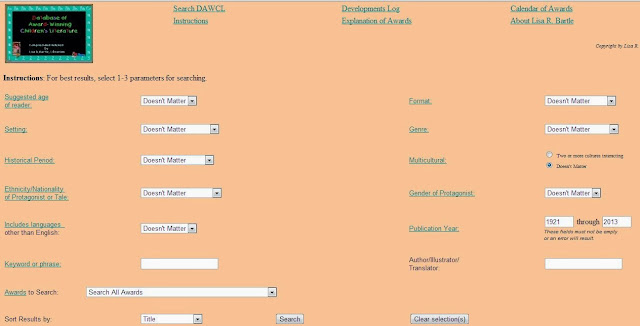This week, I have read Larry J Mikulecky's « Using Internet-based Children’s Literature to teach EFL”. Like many
classmates, I go along with the writer that there are many profits to be
derived from child books. They facilitate comprehension because of their low
level and illustrations. They also ease anxiety in the classroom as they give
learners a sense of mastery (learners are proud they can read a whole book in
English). However I have also read anarticle by Ciaran McCloskey which warns teachers that “children books may
appear dull and trite to some adults”. Therefore, the books chosen by teachers should
use a language which is slightly above the level of the learners. They must
also address mature themes or convey universal messages in order to raise the
interest of the learners. For this same reason the teacher must also take into
account the cultural context of the book. This exercise of assessing the level
and interest of the book may be more difficult for teachers than it seems. One
site which could alleviate the task of teachers is “Database of Award-Winning Children’s Literature”
(DAWCL ). I found this site through
Delicious.com by searching the tag “children’s_literature”. Thank you Delicious
for coming to my rescue again.
As its name
suggests, “Database of Award-winning children’s literature” has over 10 000
titles from 112 awards across 6 English speaking countries in its database. Though
it does not give a direct access to these books, the purpose of the site is to help
users create reading lists of QUALITY children's literature TAILORED to the
needs of the readers. Therefore it offers up to 15 search parameters for users
to fine-tune search until they achieve the best search results. You can even go
as far as to narrow the search to the sex of the protagonists in the book, to
their ethnicity or nationality, to particular keywords or phrases in the book.
 |
| screen shot of the search parameters of DAWCL. |
Here
is how I personally used this formidable site this week for my 1st
year accountancy students: Right now,
I have reached the chapter about MONEY AND BARTER in the syllabus of 1st
year finance and accounting students. Unfortunately many of my students have
difficulties understanding the concept of barter. So I decided to look for an award
winning child book which level would not be too high for first year
students but where the keyword “barter” would be correctly illustrated
for them to read at home before the course. I searched with the parameters of
DAWCL and it returned a list of 5 child books topped by “A New Coat for Anna”
By Ziefert Harriet. It is the story of Anna,
a girl who needs a new coat, but it is after the war and there is no money.
Through bartering and patience, Anna and her mother get the girl a new coat,
then celebrate Christmas with all the people that helped.
Since the
site does not offer a printable version of the book, I used the search tips
suggested by Deborah Healey in her excellent “Better Web Searching”
submitted to us by Sean last week. Here is what I found:
Thus, I
have been able to gather all the materials I will need for my next week’s
lesson. I feel confident now because I have started using technology for enhancing
my teaching. Here is the link to the technology enhanced lesson plan I have writen for this book:
Hello again Niangoran:
ReplyDeleteI totally agree that children' books sometimes can appear dull and boring to some learners. Personally, when I was learning English and French long time ago, I used to buy used novels and classic books in French and English. I love encountering new words and phrases while reading a book. This does not mean that I do not enjoy reading children's books, but once those books are finished, I look forward to read more challenging books.
I think that both easy and difficult book motivate the students: if the book is easy, the students might want to read something more difficult. If the book is difficult, the student (like me) might want to learn all the words in order to improve his/her language proficiency.
Thanks for the link.
You are welcome,Garcia.
DeleteAssessing the level of a child book for adult learners can be particularly difficulr for teachers. Hence the learners must be taught how to self select their own reading material through the "five fingers method". But the method is not a panacea. What works for native speakers for instance may not necessarily work for EFL students. Therefore the method needs to be adapted to suit the group of learners it is meant for. you will find an example of adaptation in my post on the discussion thread on Nicenet. Thanks again.